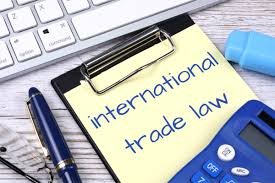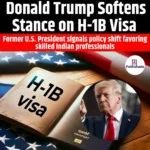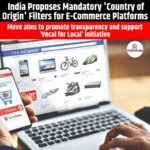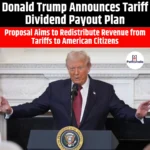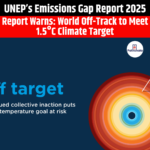China Files WTO Complaint Against India Over EV And Battery Subsidies
|
General Studies Paper II: India and Its Neighbors, Groups and Agreements Related to or Affecting India’s Interests, Government Policies & Interventions |
Why in News?
Recently, China filed a complaint in the World Trade Organization, raising concerns over India’s subsidies for electric vehicles and battery manufacturing, arguing that these incentives unfairly favor local industries, creating tensions in global trade.
Highlights of China’s WTO Complaint Against India
- On October 15, 2025, China lodged a formal complaint with the World Trade Organization (WTO) against India, accusing the latter’s subsidies for electric vehicles (EVs) and batteries of breaching multiple international trade regulations.
- China contends that these measures contravene the WTO’s principle of national treatment, which mandates equal treatment for imported and domestic goods.
- China characterizes India’s EV and battery subsidies as “import substitution subsidies,” which are prohibited under WTO rules. These subsidies are designed to promote domestic production by making imported goods less competitive, thus encouraging local manufacturing.
- China has formally requested consultations with India under the WTO’s dispute settlement mechanism. This initial step is intended to resolve the issue bilaterally. If the consultations do not lead to a satisfactory resolution within 30 days, China may request the establishment of a dispute settlement panel to adjudicate the matter.
- China has also filed similar complaints against other countries, including Turkey, Canada, and the European Union, over their subsidy programs. These actions suggest a strategic approach by China to challenge subsidy practices.
What are the Global Trade Norms Set by the World Trade Organization (WTO)?
- The World Trade Organization (WTO) was established in 1995 to regulate international trade. Its primary goal is to ensure trade flows smoothly, predictably, and freely across countries.
- The WTO provides a framework of rules, agreements, and mechanisms that guide trade relations among 164 member countries as of 2025 to reduce trade barriers, prevent unfair practices, and create a level playing field for all nations.
- The Most-Favored-Nation (MFN) principle is a key WTO norm. It requires countries to treat all trading partners equally. If a country gives a trade advantage to one member, it must extend the same benefit to all other WTO members.
- The National Treatment Principle ensures that imported goods are treated no less favorably than domestic goods once they enter a country. It applies to taxation, regulations, and other domestic policies. This rule maintains fairness and avoids protectionism in domestic markets.
- WTO sets clear guidelines on tariffs, quotas, and other trade barriers. Countries cannot arbitrarily raise tariffs or impose restrictions on imports. Members are encouraged to reduce tariffs gradually to facilitate free trade.
- WTO regulates subsidies that may distort trade through the SCM Agreement. It prohibits certain types of subsidies that give domestic producers an unfair advantage. For example, export subsidies that favor local companies over foreign competitors are restricted.
- The Trade-Related Aspects of Intellectual Property Rights (TRIPS) agreement protects patents, copyrights, and trademarks in international trade. It ensures that innovations, technologies, and creative works are not exploited unfairly across borders.
- The WTO provides a Dispute Settlement Mechanism to resolve trade conflicts among members. Countries can bring complaints if they believe another member violates trade rules. The DSM offers consultations, panel rulings, and appeal processes to ensure compliance.
- WTO grants Special and Differential Treatment to developing and least-developed countries. This allows them flexibility in implementing rules, longer timeframes, and technical support.
India’s Electric Vehicle (EV) and Battery Manufacturing Policies
India’s commitment to sustainable mobility is evident in its robust policy framework aimed at promoting electric vehicles (EVs) and domestic battery manufacturing. The government’s initiatives are designed to reduce carbon emissions, decrease reliance on fossil fuels, and position India as a leader in the global EV market.
- Production-Linked Incentive (PLI) Scheme: The PLI scheme is a cornerstone of India’s strategy to boost domestic manufacturing. In 2025, the government allocated significant funds to incentivize the production of EV components and batteries with allocations of ₹25,938 crore for the Automobile and Auto Component industry and ₹18,100 crore for the Advanced Chemistry Cell (ACC) Battery Storage program. This initiative aims to attract both domestic and foreign investments, reduce import dependency, and create employment opportunities.
- FAME-II Scheme: The Faster Adoption and Manufacturing of Hybrid and Electric Vehicles (FAME-II) scheme provides subsidies to reduce the upfront cost of EVs. Implemented in 2019 with a total budget of Rs. 10,000 crore, it focuses on electric two-wheelers, three-wheelers, and buses. The scheme also supports the establishment of charging infrastructure, aiming to make EVs more accessible to the public.
- GST Reductions: To make EVs more affordable, the Goods and Services Tax (GST) on electric vehicles has been reduced to 5%. Additionally, GST on chargers and charging stations has been lowered from 18% to 5%. These tax reductions decrease the overall cost of EV ownership and encourage consumers to consider electric alternatives.
- State-Level Initiatives: Several Indian states have introduced their own EV policies to complement national efforts. For instance, Uttar Pradesh offers subsidies for EVs manufactured within the state. Buyers can get subsidies up to Rs 20 lakh depending on the vehicle type, along with exemptions from road tax and registration fees. Similarly, Himachal Pradesh has launched Rajiv Gandhi eTaxi Scheme to promote electric taxis, providing 50% subsidies and employment opportunities for youth.
- National Clean Tech Mission: The National Clean Tech Mission is a strategic initiative to promote clean technologies, including EVs and renewable energy solutions. The mission provides financial support for research and development, aiming to foster innovation in the EV sector.
- Vision for 2030: Looking ahead, India aims to achieve significant milestones in EV adoption by 2030. The government targets a substantial increase in the share of EVs in total vehicle sales, with specific goals for private cars, commercial and two- and three-wheelers. The government’s target is to achieve a 30% EV penetration in the total vehicle sales by 2030. These targets reflect India’s commitment to sustainable transportation.
Implications for India-China Trade Relations
- Impact on Bilateral Trade Balance: China remains the second-largest trading partner of India, reflecting the depth of economic engagement between both nations. In the fiscal year 2024–25, India’s exports to China declined by 14.5%, falling to $14.25 billion from $16.66 billion in 2023–24. At the same time, imports from China increased by 11.52% to $113.45 billion, up from $101.73 billion in the previous fiscal year. This has led to a widening trade deficit of $99.2 billion, showing how heavily India relies on Chinese goods, particularly in sectors like electronics, machinery, and chemicals. The WTO dispute over EV subsidies could further strain this imbalance, as China might adopt retaliatory trade measures.
- Pressure on Supply Chains: The current dispute adds stress to already sensitive economic ties between India and China. Both nations are deeply linked through manufacturing and technology supply chains, especially in the automotive and electronics sectors. China’s complaint at the WTO could discourage new investments or joint ventures in the EV ecosystem. Indian firms that rely on Chinese battery cells, raw materials, and semiconductors may face higher costs or supply disruptions if trade restrictions increase.
- Diplomatic Relations: The trade conflict could have broader diplomatic implications for India-China relations. Since both countries already face border and geopolitical tensions, a trade dispute at the WTO may add another layer of complexity. China’s growing dominance in global EV exports—2.01 million EVs and plug-in hybrids shipped in the first eight months of 2025, up 51% from a year earlier—shows its strong international ambitions. India’s efforts to promote its own EV sector through targeted subsidies and policies may be viewed by China as a competitive challenge.



